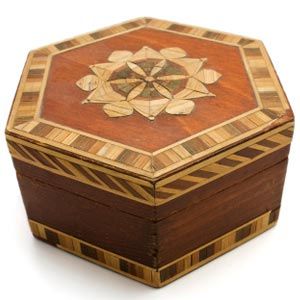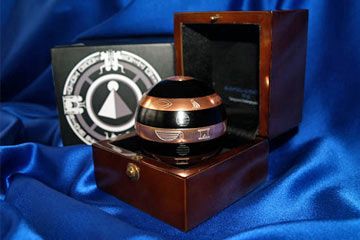To the average American, the word "puzzle" conjures up a single image: the jigsaw puzzles we wrestled with as children during rainy days. While there is undoubtedly some art and strategy to jigsaw puzzles, they are, by definition, a little flat. True puzzle aficionados know that there's a whole universe of three-dimensional puzzles and riddles -- some made out of wood, others out of metal, plastic or even fabric -- that boggle the mind and delight the senses. Jerry Slocum, one of the foremost puzzle historians, calls these 3-D puzzles mechanical puzzles.
The Rubik’s Cube is easily the most famous mechanical puzzle. Invented by Hungarian architect and professor Ernö Rubik in 1974 as the Magic Cube and introduced in America in 1980 as the Rubik’s Cube, the six-sided puzzle has sold 350 million units, making it the most popular toy in history [source: Rubik’s]. The Rubik’s Cube is an example of what Slocum calls a sequential movement puzzle. With a lot of practice, a solver can learn the algorithms, or sequence of set movements, to move any piece of the cube to any other position.
Advertisement
Another example of a mechanical puzzle is the puzzle box, an intricately crafted wooden box that can only be opened through a series of precisely executed moves. Although many countries lay claim to their own puzzle box traditions -- including Czechoslovakia, Morocco and Puerto Rico -- some of the most difficult boxes come from Japan [source: Slocum]. Most Japanese boxes only require six moves to open, but some very large boxes require 125 separate moves to solve -- and cost thousands of dollars to buy [source: Puzzle Box World].
Japan and China have birthed many 3-D puzzles. Tangram puzzles -- a square divided into seven different pieces that must be reassembled in specific shapes and patterns -- became wildly popular in China in the early 1800s before moving West. The Japanese also invented Kumiki puzzles, some of the first 3-D interlocking puzzles to take on the shapes of animals and other objects [source: Cleverwood]. Other interlocking puzzles that grew out of the Kumiki tradition include Burr puzzles and Chuck puzzles -- both difficult wooden puzzles that form artistically geometric shapes.
In 1989, amateur French-Canadian inventor Paul Gallant made the first 3-D jigsaw puzzles with cutouts of polyethylene foam coated with painted paper. The foam pieces were light enough and made tight enough connections to support towering structures and accurate models of medieval castles, Alpine villages and hundreds more creations. The company Gallant founded in 1991 became so successful that his factory was churning out 30,000 3-D puzzles a day to keep up with holiday demand [source: DePalma].
Advertisement


